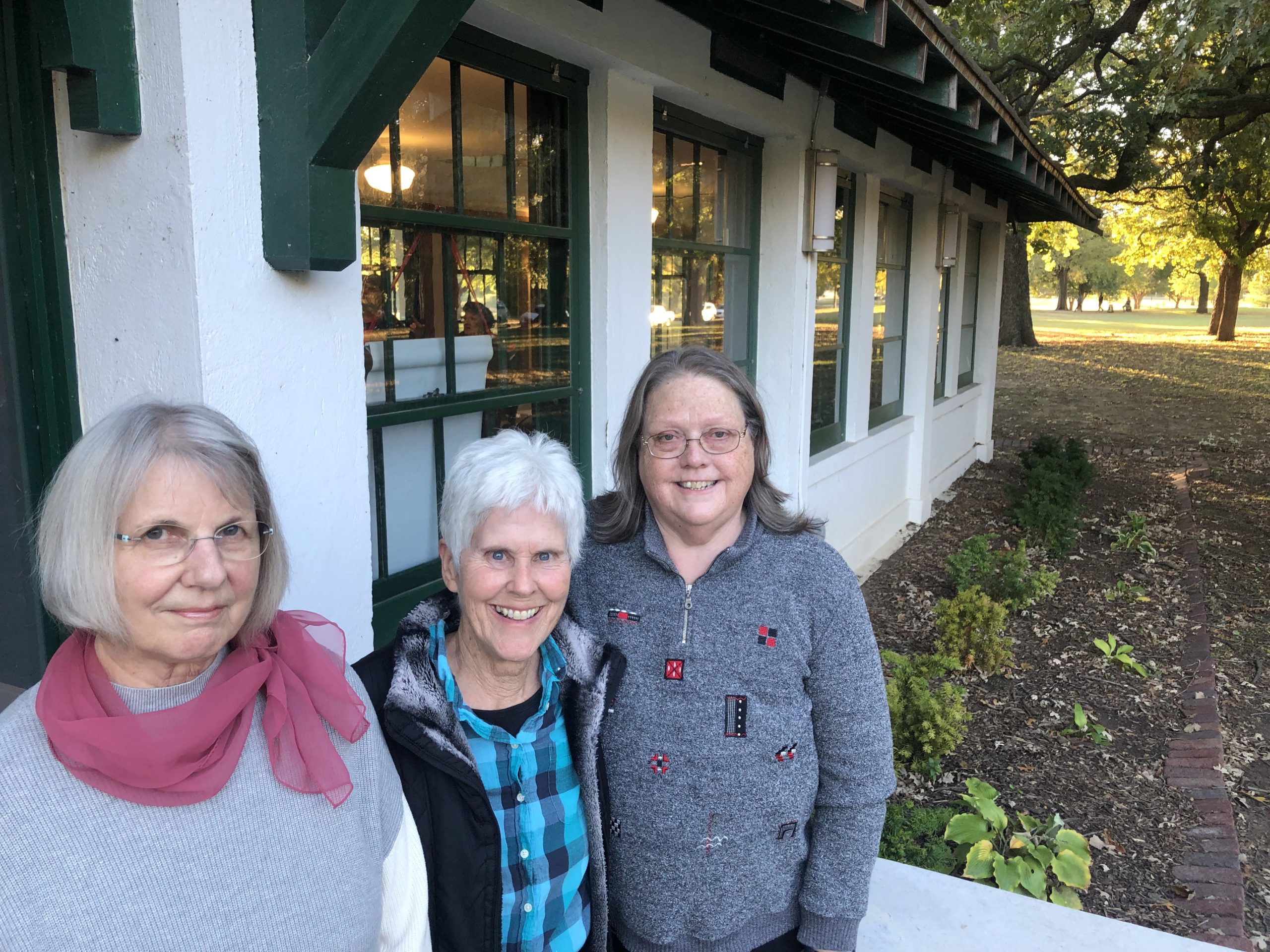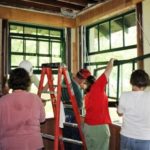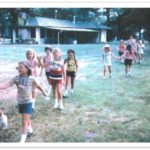A historic building that was constructed in three months a century ago took volunteers more than a decade to restore.
They say it was worth every Saturday spent stripping paint and patching walls, every grant application filled out and every donation request made on behalf of the Fresh Air Baby Camp building. Known by many for its later life as the Little Girl Scout House, the building in North Riverside Park was reopened with a ribbon cutting and open house last month. It’ll be used as a rental venue by the city.
“I just think that it’s a marvelous resource,” said Kathy Morgan, the city’s historic preservation planner and a key volunteer on the project. “To know that this is, if not the only one, one of the very few purpose-built baby camps that exist in the United States, Wichita is fortunate to have something like that.”
Claire Willenberg, president of the Friends of the Historic Fresh Air Baby Camp, said “thousands and thousands” of volunteer hours went into the restoration along with about $700,000 in real and in-kind spending.
As the project stretched on, Willenberg said, it was the history behind the building that kept volunteers going.
The baby camp was part of an international campaign to better care for ailing infants from lower-income families by treating them in a well-ventilated space rather than the close confines of a hospital, when weather permitted. Wesley Hospital, then located at 10th and St. Francis streets, had set up a tent for babies there a few years earlier. Acting on a local physician’s suggestion, a committee of 15 women raised money in 1919 to build a new tent baby camp in a more bucolic setting, choosing a site near the current building, where the Little Arkansas River could provide a cool breeze. But just prior to its second season, the camp was destroyed by fire.
In response, the women’s committee quickly raised money for a new facility, designed to be fireproof. Architect Lorentz Schmidt and builder George Siedhoff donated their services. When the building opened in August of that year, a supporter called it “the best summer home for sick babies west of Chicago.”
“It was just an outpouring of care and concern for babies. It wasn’t huge, but Wichita wasn’t all that big either,” Willenberg said of the city, which then had about 72,000 residents. The building had room for 20 cribs.
“They did in three months what has taken us 10½ years — it was kind of depressing,” Willenberg jokingly added.
The Wichita Eagle regularly ran updates on babies in the camp, such as this one from the summer of 1923: “Baby Kenneth will have an operation once he has gained weight and is stronger.”
The building served as a summer baby camp until 1926, when the operation moved to Wesley’s new location on North Hillside. The building was then leased for a dollar a year to the Girl Scouts, who used it for day camps and troop activities for 75 years. Willenberg remembers packing her lunch for day camps at the Little Girl Scout House, from which Scouts would set off on hikes around Riverside Park. One estimate is that 30,000 Scouts passed through the Little House.
The Girl Scouts turned it back to the city in 2001. After sitting vacant for several years, the structure appeared headed for demolition. The sky showed through holes in the roof, termites had destroyed supports around the front and back doors, and concrete structures had crumbled away.
Neighbors’ concerns brought it to the attention of the city’s historic preservation office in 2004. A couple years later, Morgan and Barbara Hammond, who also worked in the preservation office, wrote the application that got the building placed on the National Register of Historic Places.
The two happened to be neighbors in North Riverside. In 2011, they joined with other neighbors to form the nonprofit Friends group. Willenberg took over as president a couple years later. Wichita attorney Jim Guy, who died in 2017, helped the group with legal matters while his fellow preservationist, Mike Seiwert, signed on as project architect.
The group got a big boost two years later with a matching grant from the Heritage Trust Fund, which allowed it to re-roof the building with green clay tiles made by the same company that produced the originals. The Friends continued to raise money while devoting four to six hours to hands-on labor most Saturdays. Much of the work was done by six to eight regulars, all of them 60 or older, occasionally supplemented by 10 to 15 more volunteers.
Morgan noted that each of the 28 original triple-hung windows required at least 40 hours to restore.
The exterior was painted, Craftsman-style window and door trim that had been covered by paneling restored, concrete floor polished, outside electric lines moved underground, a new sewer line installed, fireplace repaired, bathroom and kitchen stripped and outfitted. Another grant from the Heritage Trust provided storm windows. A heating and air company donated a geothermal system, and Willenberg said much of the work that had to be hired out was discounted.
“Concrete cutters would take off five hours of time (from their bill). Sheet rockers would give us 20 percent off. The sewer line guy did his work for free. The election union, plumbers and pipefitters all donated stuff to get it up and running.”
Hammond, the project historian and grant writer, continued to research the building. One person she interviewed was the twin of a woman who’d been cared for there as a baby. The pandemic set back work on the building about eight months, but other than a pergola or canopy to cover the back patio, it’s now substantially complete.
David McGuire, the city’s superintendent for park maintenance and forestry, called it unusual for a private group to restore a public property.
“They took on a pretty big endeavor and it took them, you know, some time because everything was based on donations,” he said. “They wanted to do a really good job of making it look new but making it look original, and that’s what they accomplished.”















